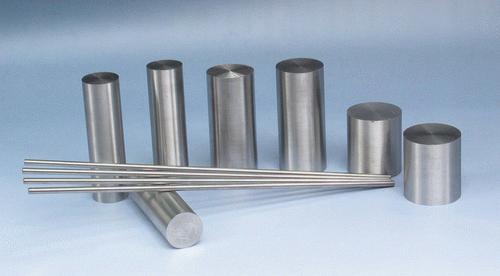In my country, the smelting technologies of titanium and titanium alloys are mainly vacuum consumable arc smelting technology and cold-bed furnace smelting technology. This article will explain its development status from the principles and characteristics. With the continuous development of the times, metal smelting technology will continue to develop and improve. Therefore, researching and summarizing the original smelting technology will be of great significance to the development of innovative smelting technology.

With the advent of the new era, metal smelting technology is constantly improving and improving. Although new smelting technologies continue to appear, the quality and output of production materials have also been greatly improved, but there are still a series of problems such as high energy consumption and low technology. Therefore, the analysis of the original smelting technology will be of great significance to the development of the smelting technology in the future. Unlike other metals, titanium and titanium alloys are highly chemically active metals. Therefore, under melting conditions, they basically react with all refractory raw materials and cannot be smelted in the atmosphere. They can only be smelted under vacuum or inert atmosphere conditions. Because of the difficulty of smelting technology, only a few countries can control the smelting technology of titanium and titanium alloys. Currently, titanium and titanium alloy smelting technologies mainly include vacuum consumable smelting and vacuum non-consumable smelting. The article focuses on vacuum consumable arc smelting technology, cooling bed furnace smelting technology, PACHM technology and vacuum consumable smelting technology.
1. Vacuum consumable arc melting technology
1) The principle of vacuum consumable arc smelting technology. Nowadays, most titanium and titanium alloys use vacuum consumable arc smelting technology. First, the consumable electrode is pressed and set as the negative electrode, and the copper crucible is set as the positive electrode, and the titanium and titanium alloy are placed in a vacuum or inert environment. , The electrode is heated under the high temperature of the arc, and it is quickly melted and agitated. At the same time, the volatile impurities are quickly diffused and removed, and the electrode is fully stirred to make it uniform.
2) Features of vacuum consumable arc smelting technology. Vacuum consumable arc smelting technology is characterized by extremely fast smelting speed, high automation of the smelting process and simple smelting operation, which can achieve general industrial goals, and has the effect of removing extremely volatile impurities and some nitrogen and other gases. Excellent
3) Development status of vacuum consumable arc smelting technology. The vacuum consumable arc smelting technology has been in existence for more than 50 years, and the technology development has reached a mature stage, which is mainly manifested in the following five aspects:
①The size of the finished product is enlarged. Arc smelting is a batch production process, so if large-scale production is carried out, its efficiency will be greatly improved, and with the continuous development of the new era, the industry’s demand for large-scale sub-products is also increasing, requiring more and larger products. Therefore, the vacuum consumable arc smelting technology has solved this problem well.
② The process is fully automated. At present, the vacuum consumable arc melting furnace has been fully automated. At present, most vacuum consumable arc smelting furnaces in our country use the data system of the online automatic electric control box. The remelting formula can be used to control the production process through the computer and monitor the problems in the smelting process, which greatly improves the finished product. rate. In the actual vacuum arc smelting, the electrode gap is an important parameter, which is directly related to the length and depth of the arc, and will also affect the axial temperature and concentration, and also has an important impact on the macro analysis of the product. Many researchers accurately control the electrode gap by detecting the number of short circuits at both ends of the unit electrode per second, and use filtering algorithms to accelerate the automatic control of the electrode gap. At the same time, the speed of smelting will also be directly related to the composition and quality of titanium products. The team represented by Williamson has developed a dynamic melting rate control model by considering the influencing factors as a whole, such as electrode gap and electrode weight. And then realize smelting automation.
③The production is highly efficient. As the quality of consumable electrodes has been greatly improved, the stability and repeatability of the vacuum consumable arc smelting technology has also been greatly improved. Moreover, in foreign countries, the vacuum consumable arc smelting technology mostly chooses the double-station arrangement mode, and the melting Time can be alternated to achieve high efficiency of production, greatly reduce labor costs, greatly improve production efficiency, save production time, and narrow the gap with major countries.
④The power supply tends to be stable. In the beginning, most of the vacuum consumable smelting technology used non-coaxial form of power supply, but if a strong current passes through, it will generate a very strong and complex magnetic field, and the smelting process is extremely unstable. The current new vacuum consumable arc smelting furnaces all use coaxial power supply, which can resist the influence of the magnetic field and prevent the occurrence of segregation.
⑤Introduce numerical simulation methods. In the past, vacuum melting of titanium and titanium alloys was only perceptual, and the value of the temperature field was not clear. Although the process of vacuum consumable arc smelting technology is relatively simple and easy to operate, the characteristics of the heat source will cause the temperature of the melt to be uneven, resulting in uneven composition and structure of the product, and defects are also prone to occur. Recently, computer simulation technology has developed in depth, and many people have deepened their awareness of solidification theory. Chinese researcher Zhao Xiaohua uses finite element simulation to understand the temperature field distribution of the smelting process, and then analyze the laws of smelting at different stages.
2. Cooling bed furnace smelting technology
Cooling bed furnace smelting technology is mostly used in the production of aviation titanium alloys, which can improve the quality and reliability of titanium alloys, make up for the deficiencies of vacuum consumable arc smelting technology, and are also suitable for industrial production.
1) The principle of smelting in a cooling bed furnace. The cold-bed furnace smelting is divided into three parts, namely the melting part, the refining part and the crystallization part. In the melting part, the raw materials are converted from solid to liquid, and the liquid titanium liquid is introduced into the refining part; in the refining part, the titanium liquid stays on the cooling bed furnace for a period of time, which can effectively remove volatile impurities such as calcium and magnesium Etc.; Finally, in the crystallization part, the treated titanium solution is introduced into the crystallizer for shaping.
2) Advantages of cooling bed furnace smelting.
① There are a wide variety of finished products, and there is no need to press electrodes, which greatly shortens the time, reduces the cost, and improves the quality of the products;
②A large amount of economical production materials can be used;
③It can effectively remove volatile, low-density and high-density impurities;
④The density of the product can be controlled by the power, and the treatment time of the titanium liquid in the cooling bed can be controlled at the same time, which greatly improves its uniformity, stability and flexibility;
⑤ Different types of products can be produced, and the loss in production can be reduced, and the yield of products can be improved;
⑥ It can realize one-time molding, one furnace and multiple models, which improves production efficiency.
3. Development status of PACHM technology
PAM furnaces are mainly used in the United States and the development time is the earliest. After years of development, many countries have the ability to mass produce high-quality titanium alloys. The United States, Russia and other developed countries have introduced them into the aerospace field on a large scale. For example, The U.S. Navy’s F-16 aircraft produced the F110 engine using plasma cooling furnace smelting technology. Most of the key parts of American Airlines engines use the "HEARTH+VAR" titanium alloy process, which shows that the single cooling bed furnace smelting technology is also feasible in the production of aviation titanium alloys and can save product processing costs and increase the yield.
my country has adopted PACHM technology for a relatively short period of time. The first to be introduced was the Beijing Institute of Aeronautical Materials. In 2003, it purchased a PACHM furnace produced in the United States with a total power of 600kW, which can realize the integration of ingot drawing and casting. The TC4 and TiAl ingots produced by it have achieved great success in terms of the content of impurity elements, inclusions and alloying elements in the alloy. In order to enhance market competitiveness and expand melting and casting capacity, Shanghai Baosteel Group introduced a single crystallization chamber and double crucible PACHM furnace in 2008. With the continuous development of production technology, the PACHM furnace has also added a helium recovery and regeneration system, which can not only recover gas to reduce costs, but also achieve environmental protection. In order to further optimize the PAM production process, the United States has also developed a cooling bed furnace smelting simulation software, which can observe the flow direction and temperature of the titanium solution in real time, and the simulation software has been gradually applied to the field of titanium alloy production.
4. Conclusion
With the continuous development of the new era and the in-depth development of my country’s titanium industry, the vacuum smelting technology of titanium and titanium alloys has also been progressing and becoming mature. Although my country’s development speed is relatively fast, it still has a certain distance from other developed countries. gap. However, new smelting technologies are also constantly appearing, which will solve the problems of high energy consumption and low indicators. Therefore, my country must keep up with the pace of the times, optimize production processes, improve production efficiency and profit, and promote the overall development of my country's economy and society in the new era. .
|

